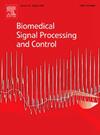Cwin-Net:一种用于磁共振图像超分辨率的通道窗口注意网络
IF 4.9
2区 医学
Q1 ENGINEERING, BIOMEDICAL
引用次数: 0
摘要
在当代医学诊断和治疗干预中,高保真磁共振成像(MRI)在确保准确的临床评估方面发挥着关键作用。然而,延长的MRI采集时间对患者舒适度和医疗保健系统效率都提出了实质性的挑战。为了解决这些限制,我们引入了Cwin-Net——一个专门为磁共振图像超分辨率设计的通道窗口注意力网络。提出的Cwin注意机制引入了两个关键创新:首先,通过将窗口移动注意与通道加权机制有机结合,实现了局部细节和全局信息的协同捕获。其次,引入动态信道权值调整机制,使网络能够自适应增强关键特征信道的表示,从而在保持全局结构的同时显著提高细节保存。认识到MR图像特征的固有复杂性,我们实现了分割感知损失,以结合解剖学先验知识,从而优先重建临床相关的纹理模式。该架构进一步集成了特征增强块(FEB)来优化深度特征集成,通过学习权重参数和频域分析选择性地放大诊断重要元素。在OASIS、ACDC和Knee数据集上的广泛验证表明,Cwin-Net优于最先进的方法,在定量指标和视觉质量评估方面都取得了最佳性能。本文章由计算机程序翻译,如有差异,请以英文原文为准。
Cwin-Net: A channel window attention network for magnetic resonance image super-resolution
In contemporary medical diagnostics and therapeutic interventions, high-fidelity magnetic resonance imaging (MRI) plays a pivotal role in ensuring accurate clinical assessments. However, prolonged MRI acquisition times present substantial challenges to both patient comfort and healthcare system efficiency. To address these limitations, we introduce Cwin-Net — a channel window attention network specifically designed for magnetic resonance image super-resolution. The proposed Cwin attention mechanism introduces two key innovations: First, by organically combining window-shift attention with channel weighting mechanisms, it achieves synergistic capture of both local details and global information. Second, the introduced dynamic channel weight adjustment mechanism enables the network to adaptively enhance the representation of key feature channels, thereby significantly improving detail preservation while maintaining global structure. Recognizing the inherent complexity of MR image characteristics, we implement a segmentation perceptual loss to incorporate anatomical prior knowledge, thereby prioritizing the reconstruction of clinically relevant textural patterns. The architecture further incorporates Feature Enhanced Blocks (FEB) to optimize deep feature integration, selectively amplifying diagnostically significant elements through learned weight parameters and frequency domain analysis. Extensive validation on the OASIS, ACDC, and Knee datasets demonstrates Cwin-Net’s superiority over state-of-the-art methods, achieving optimal performance in both quantitative metrics and visual quality assessments.
求助全文
通过发布文献求助,成功后即可免费获取论文全文。
去求助
来源期刊

Biomedical Signal Processing and Control
工程技术-工程:生物医学
CiteScore
9.80
自引率
13.70%
发文量
822
审稿时长
4 months
期刊介绍:
Biomedical Signal Processing and Control aims to provide a cross-disciplinary international forum for the interchange of information on research in the measurement and analysis of signals and images in clinical medicine and the biological sciences. Emphasis is placed on contributions dealing with the practical, applications-led research on the use of methods and devices in clinical diagnosis, patient monitoring and management.
Biomedical Signal Processing and Control reflects the main areas in which these methods are being used and developed at the interface of both engineering and clinical science. The scope of the journal is defined to include relevant review papers, technical notes, short communications and letters. Tutorial papers and special issues will also be published.
 求助内容:
求助内容: 应助结果提醒方式:
应助结果提醒方式:


